- What is first contact resolution?
- Why is first contact resolution important?
- How to measure first contact resolution rate (with formula)
- Gross FCR rate
- Net FCR rate
- Ways to collect data for FCR measurement
- What is a good first contact resolution rate?
- 5 mistakes to avoid while monitoring FCR in your contact center
- Effective tips to improve first contact resolution for businesses
What is first contact resolution?
First contact resolution or FCR denotes the percentage of customer cases resolved by a contact center during the first interaction itself — without your customers having to repeat themselves or initiate multiple calls or interactions. FCR is an important indicator of contact center performance and helps your customer service operations with:
Performance measurement and improvement
CSAT monitoring
Cost reduction
Often, first contact resolution is used interchangeably with first call resolution, which is incorrect. While first contact resolution measures the resolution rate across all support channels — including social media, live chat and email — first call resolution is used exclusively for voice-based interactions such as IVR and telephonic conversations.
Why is first contact resolution important?
There are various customer service metrics that measure operational efficiency, customer satisfaction and agent productivity. FCR stands out from those metrics since it directly indicates the quality of customer experience you deliver across your customer service channels. A high FCR rate means your support team can resolve a good number of cases during the first contact — without requiring any follow-up from customers.
The data from Microsoft’s State of Global Customer Service report indicates that 33% of customers worldwide feel that getting their issues resolved in a single interaction is their idea of a great customer service experience. This shows how critical it is for businesses to consider FCR rates a critical business driver — and focus on constantly improving and delivering great customer service quality.
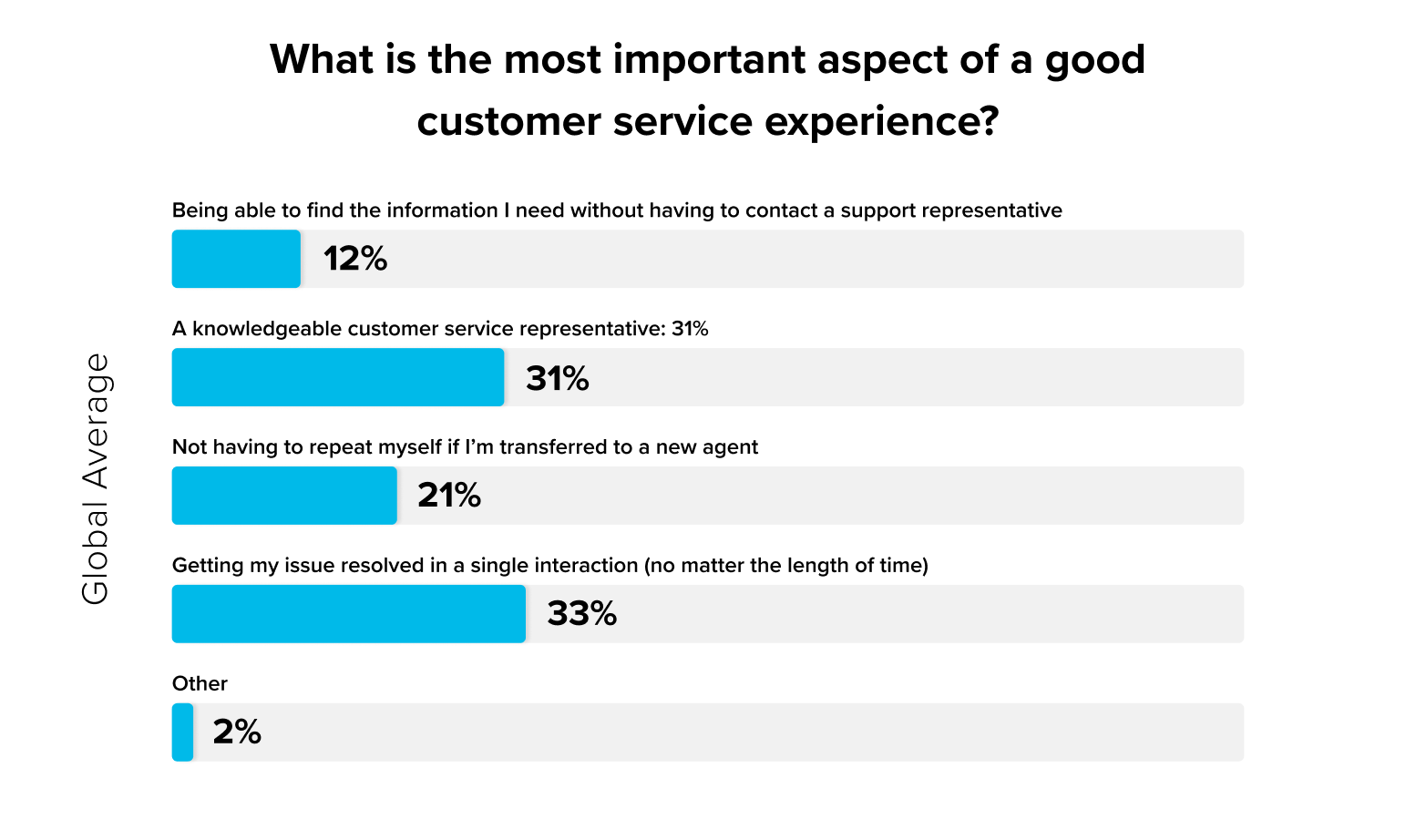
How to measure first contact resolution rate (with formula)
Before measuring FCR, we need to know more about the nature of requests coming into your customer service team. Certain customer issues can’t be addressed remotely by your contact center agents. For instance, requests for hardware installation or infrastructural changes. Do these requests negatively impact your FCR?
To answer that question, you need to understand the concept of net and gross FCR measurement.
Gross FCR rate
Gross FCR makes no allowance for customer requests that your agents can’t resolve. It computes FCR by including all kinds of incoming contacts.
The formula for calculating gross FCR is:
Gross first call resolution rate (Gross FCR) = (Number of incidents solved in first contact / Total no. of incidents) x 100
Net FCR rate
Net FCR factors in incidents that can’t be resolved at the agent level or remotely.
The formula for calculating net FCR is:
Net first call resolution rate (Net FCR) = Number of incidents solved in first contact - Unsolved incidents) x 100
Where unsolved incidents account for cases that cannot be solved at the agent level or through remote support.
Gross FCR often presents a distorted picture of a contact center’s efficiency and agent productivity, while Net FCR is a more accurate metric for contact centers to monitor.
While the formula for calculating FCR is fairly straightforward, it can be tricky to collect data pertinent to it. For example, how do you segregate cases into “resolved” or “unresolved” buckets unless customers tell you whether or not their requests are addressed?
Ways to collect data for FCR measurement
For data collection, you can use AI-led data and speech analytics — or apply one of the conventional methods below:
Asking customers on a call: Your agents can ask the customer on a call if their concern has been satisfactorily resolved. There can be dedicated advisors for asking these questions.
Customer feedback: You can gauge customer satisfaction levels using email and post-call surveys. This method is useful as you can gather additional feedback from customers, not only just resolution numbers.
No repeat calls or follow-up: If a customer doesn’t call back with the same question/concern within a specific timeframe (say, 10 days), it’s safe to assume their case is resolved. This is by far the most popular data collection method, according to a recent webinar survey:
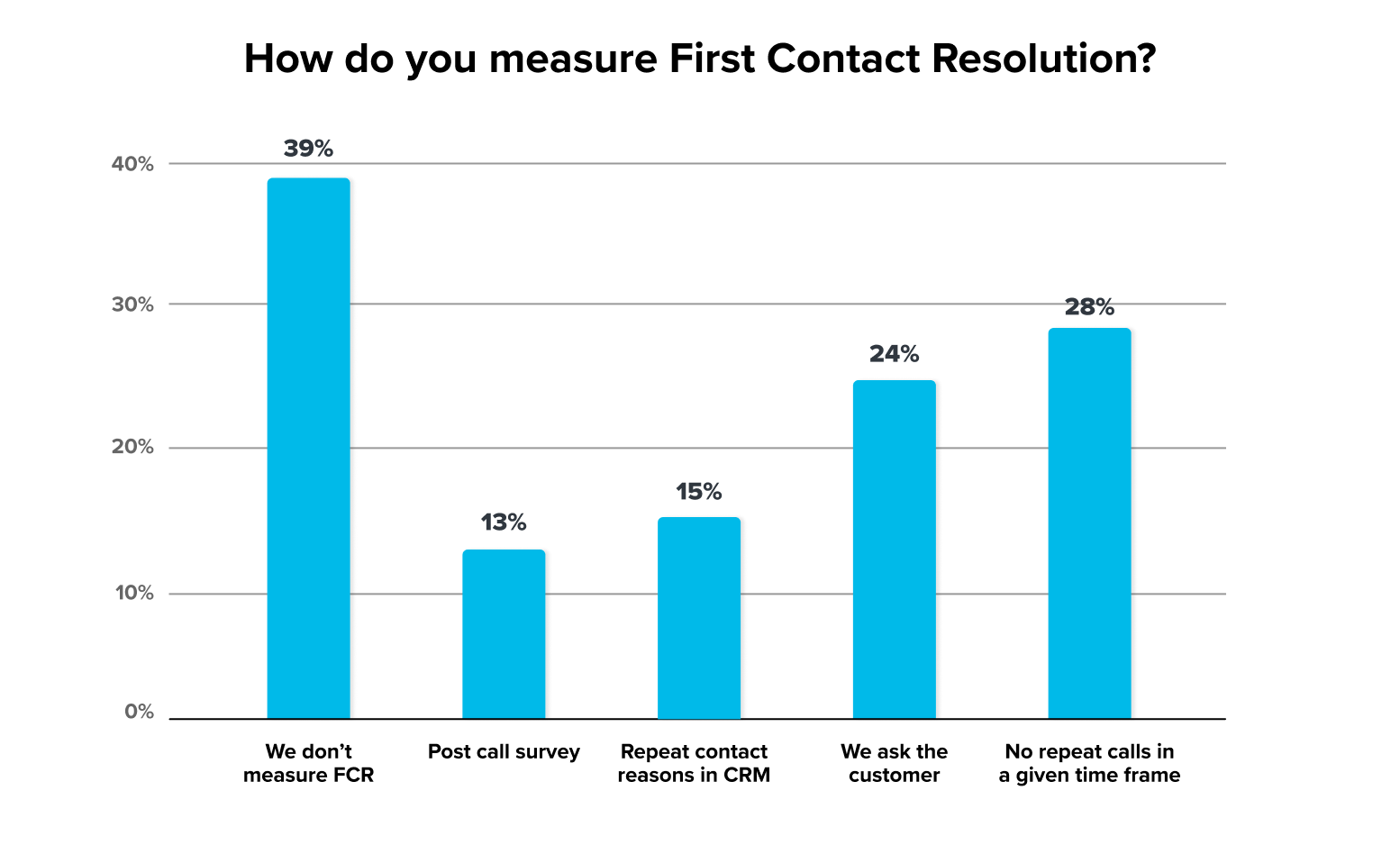
Track repeat callback reasons: You can identify reasons for repeat callbacks from your CRM solution and then compute FCR scores for each of these reasons. This method helps identify FCR challenges at the case level.
Use contact center intelligence for identifying individual contact reasons: Pick 10-15 top contact drivers, and then tackle them one at a time by using contact center analytics to chart call flows and volumes around them on a dashboard. This method helps you drill down into each contact reason and causal factors, breaking down FCR at a granular level.
What is a good first contact resolution rate?
As a rule of thumb, contact centers usually try to maintain their FCR rates between 70 and 79%. FCR rates of 80% and above are considered best in class; in fact, only 5% of organizations worldwide have achieved those rates. FCR rates below 70% indicate a faulty customer service strategy.
Learn more: 5 best customer service strategies from top tech brands
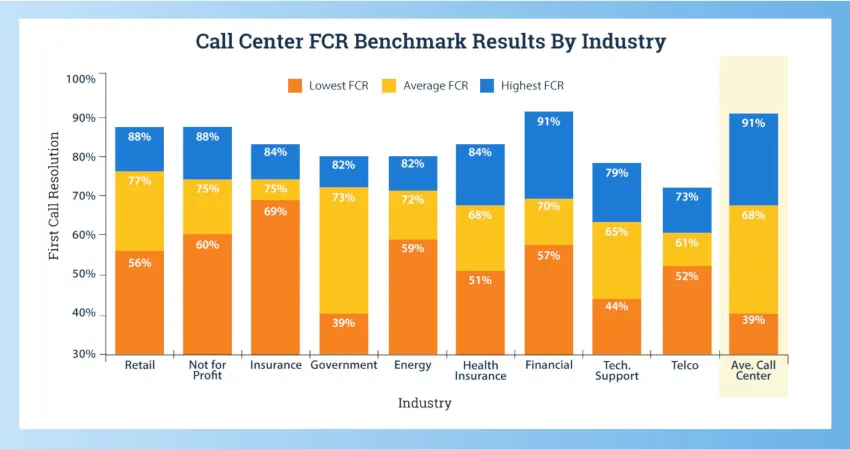
Pros and cons of using first contact resolution for organizations
Although first contact resolution proves to be an insightful performance metric in customer service, it comes with shortcomings, which tend to affect how your customer service engine functions. Here are the top pros and cons of using FCR in monitoring your support operations:
Pros of first contact resolution | Cons of first contact resolution |
1. Helps your customers and address their needs — directly improving customer satisfaction | 1. Mostly measures only short-term performance, might impact the long-term quality of the customer-agent relationship and affect customer retention. |
2. High FCR rates are a differentiator in the market; satisfied customers are less likely to switch to competitors. | 2. Focus on high FCR rates might restrict creativity and innovation; agents might prioritize efficiency over experimentation |
3. Constant FCR tracking makes agents feel more accountable — and in turn, improves employee morale. | 3. Agents might feel increased levels of stress and reduced job satisfaction, the need for a good balance between FCR and follow-ups becomes more important |
4. Promotes improved operational efficiency since processes are more streamlined and reduces average handle time. | 4. Agents might potentially pick easy cases always to improve FCR, colleagues might have to handle more complicated issues |
5. Better FCR rate eliminates the need for repeated callbacks, reduces labor overhead and lost productivity | 5. A need to maintain high FCR rates might cause agents to miss upselling/cross-selling opportunities |
5 mistakes to avoid while monitoring FCR in your contact center
First contact resolution (FCR) is a vital metric in gauging customer service effectiveness, but only chasing better FCR rates can be detrimental to your customer service quality. Here are five common mistakes to avoid during FCR evaluation:
1. Rushing through interactions: Agents may feel pressured to resolve issues quickly to meet FCR targets. This rush can lead to incomplete issue resolution or overlooking additional questions or concerns customers might have. Encourage agents to take the necessary time to address customer needs comprehensively.
2. Failing to fully understand the customer’s emotions: Some customers might require emotional support in addition to practical solutions. Customer empathy is a critical part of issue resolution, and focusing solely on numbers may cause agents to neglect the emotional aspects of customer interactions — potentially leaving customers feeling unheard or undervalued.
3. Skipping root cause analysis (RCA): Achieving FCR by addressing symptoms rather than root causes can result in recurring issues. Agents should be encouraged to investigate and address the underlying reasons behind customer problems to prevent future occurrences.
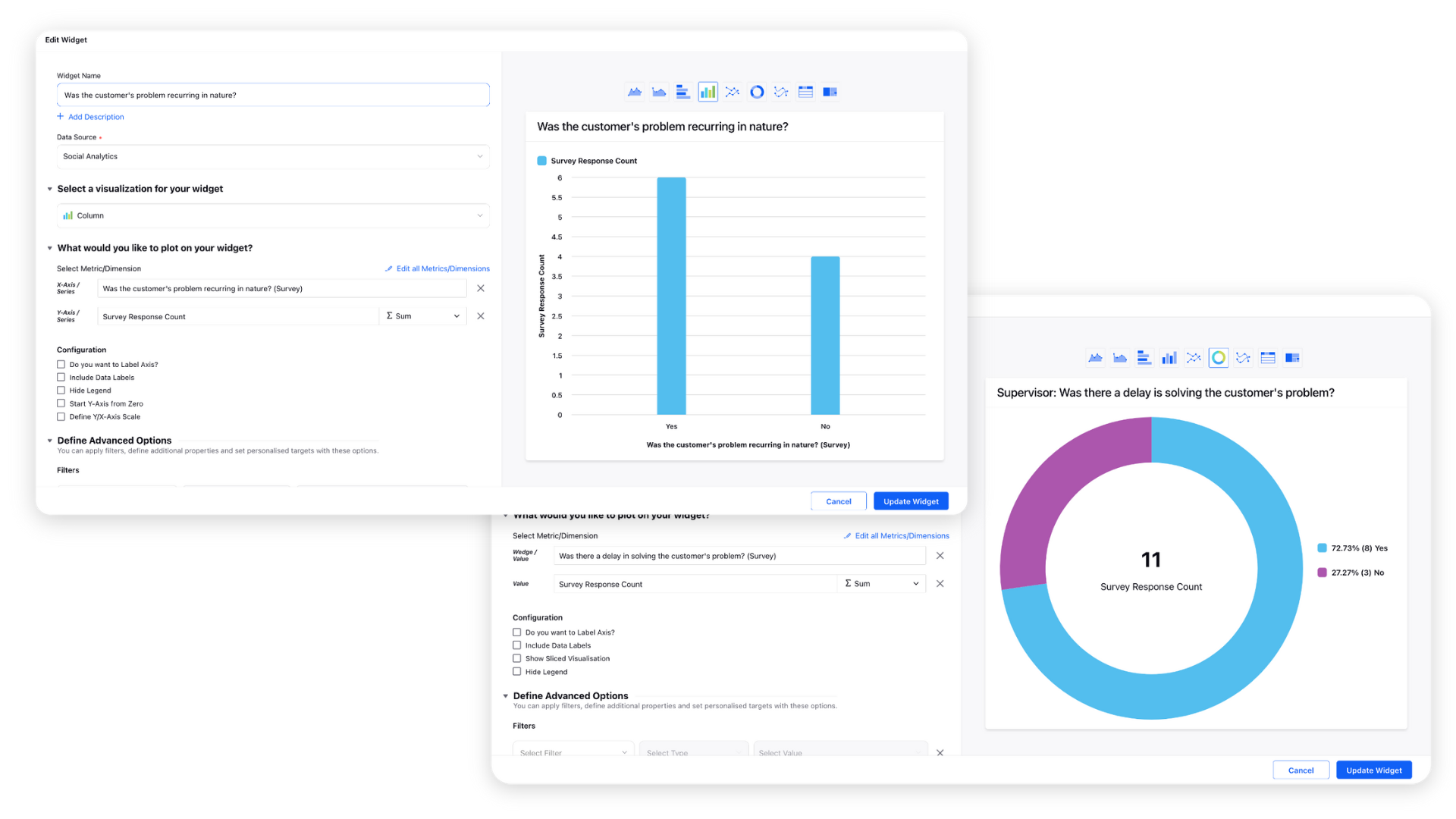
4. Underestimating complex issues: Not all issues can be resolved within a single interaction, especially when dealing with intricate or multifaceted problems. Agents should be empowered to recognize when an issue is beyond the scope of FCR and should escalate or follow up appropriately.
5. Missing follow-ups: Even if an issue is resolved during the initial interaction, it's crucial for agents to follow up with customers to ensure satisfaction and to check if any additional concerns have arisen. Neglecting follow-ups can lead to resurfacing of improperly resolved issues.
Effective tips to improve first contact resolution for businesses
Since FCR impacts your customers and agents alike, you should focus on maximizing it by applying the strategies below:
Benchmark your FCR
Diagnose the root cause of delayed FCR
Build a comprehensive knowledge base
Analyze and pre-empt customer needs
Minimize circle time
Train your agents well
Empower your support agents
Benchmark your FCR
First, you need to analyze where your FCR rate lies compared to industry benchmarks, but that’s easier said than done. FCR rates vary widely by industry, time of the year and type of contact center.
However, as mentioned before, standard industry benchmarks set FCR rates in the range of 39% to 91%, with 68% being the industry average. At the lower end are service desks that perform routine tasks like “log-and-dispatch.” At the higher end are contact centers with highly trained agents and extensive knowledge.
Diagnose the root cause of delayed FCR
Next, you need to understand the operational inefficiencies and knowledge gaps responsible for pulling down your FCR. To detect these flaws, ask yourself the following questions:
Why are customers hopping channels?
Why aren’t customers happy with the first resolution?
To whom are customers being transferred?
Examine your call records and customer surveys for feedback to find these answers. You can also debrief your agents to get their first-hand experience with customers and use that information to analyze what went wrong and where it did.
Build a comprehensive knowledge base
An exhaustive knowledge base is one of the foundational pillars of your customer support strategy. It enables customers to find answers to their common questions quickly. You even have a bonus here — if your knowledge base content is well-written and clears the customer’s query, they might never need to seek your support team’s assistance a second time.
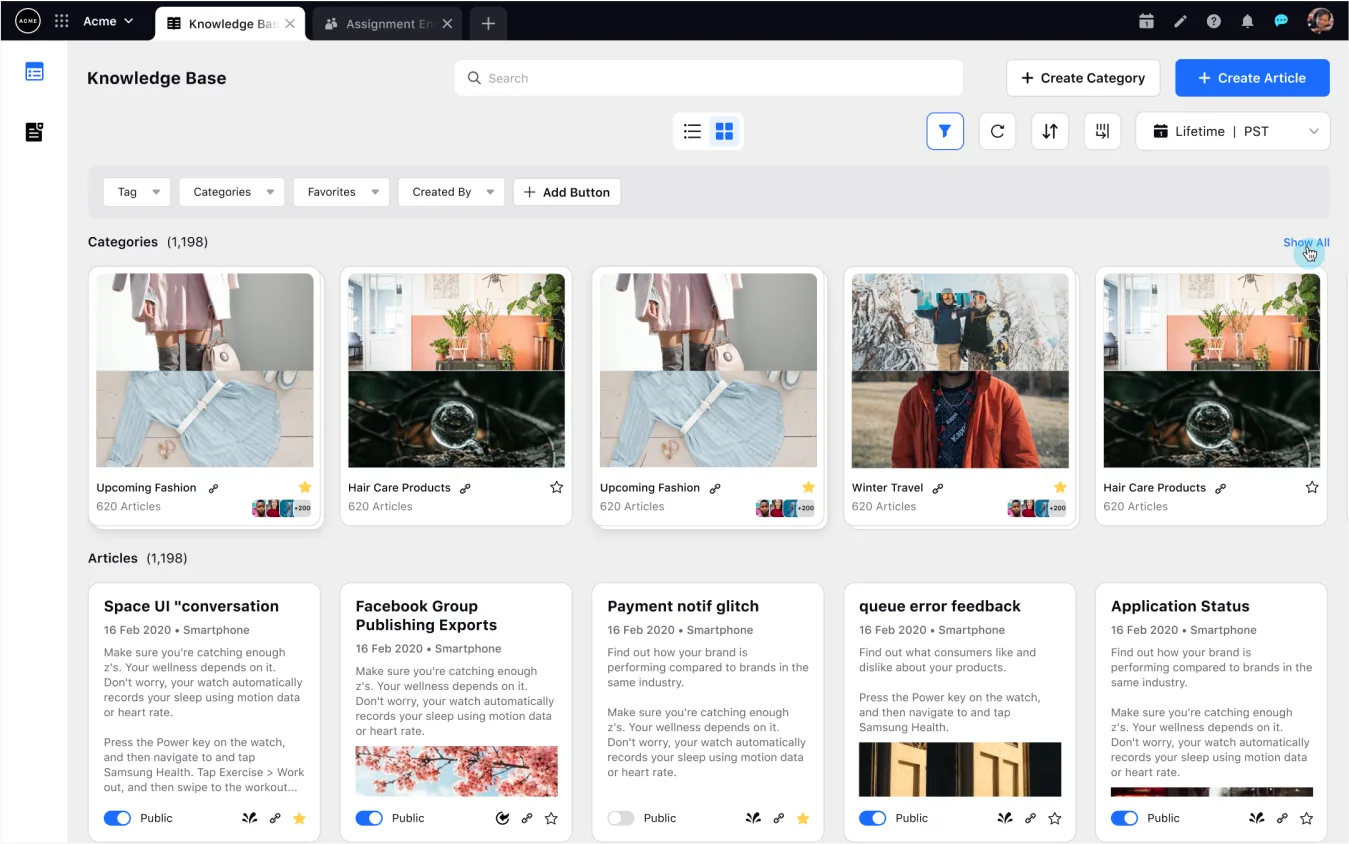
While building your knowledge base, ensure that you:
Include a variety of resources — tutorials, feature articles and videos — to cater to consumers with varied tastes, needs and levels of experience.
Tag and organize resources correctly so people can access them easily
Include content that is accurate, readable and updated periodically
Analyze and pre-empt customer needs
You must watch your customers closely to detect the issues they face while using your product/services for the first time. Gradually, over time, you will be able to anticipate issues even before they arise and nip them in the bud — boosting your FCR in the process.
To do this, you must analyze customers’ post-call feedback and log their frustrations. You can leverage AI-powered helpdesk software to generate these insights and bring down your FCR dramatically.
Minimize circle time
The key to high FCR is quick issue resolution. For that, you can deploy smart routing and workflows, so customers don’t have to jump through hoops to get to their desired solution. When customers are routed to agents with the requisite skills in the first contact, their issues are resolved efficiently and FCR is maintained. An omnichannel routing software solution powered by smart, intent-based algorithms would be your best bet for efficient ticket allocation and management.
Train your agents well
If you want to improve your FCR, coaching your agents is a good place to start. Call center agent training should not only make your support team well-versed with the product, but also make them experts at handling customers. They should be trained rigorously in dealing with agitated customers and volatile use cases.
It’s also wise to cross-train your agents so that they can handle cases that fall outside their scope when needed. Moreover, arm them with all standard troubleshooting procedures so they can provide prompt and accurate responses without having to hunt for information.
Empower your support agents
Ensure that your internal policies are not hindering your agents from solving problems in the first interaction. If your protocol demands agents to seek approval from supervisors, it can result in delayed FCR and frustration on the part of the agent and customer. Consider reviewing complex processes and empowering your agents with authority to respond at their discretion.
With more and more support channels opening up, contact volume has increased exponentially. At the same time, customer expectations regarding issue resolution are at an all-time high. Often, companies are unable to meet these heightened demands with traditional contact center systems and solutions, resulting in unnecessary follow-up calls and multiple interactions to resolve each issue.
Sprinklr’s contact center as a service (CCaaS) solution is the answer. Powered by the world’s only unified customer experience management (Unified-CXM) platform, Sprinklr Service can help you deliver prompt, proactive and seamless support and delight your customers. The advanced AI solution helps you optimize your FCR with:
Agent Assist tools to generate fast, personalized responses in real time
Smart routing to match cases with agents that have the right skills, capacity and availability
AI-led screening of incoming calls to identify top call drivers
360-degree view of customers through extensive insights from 30+ support channels
Sign up for a fully functional Sprinklr Service demo and watch your FCR rates soar with our tailor-made customer service solution.
Frequently Asked Questions
Here are some of the key benefits of achieving higher first contact resolution rates:
Increased customer satisfaction
Reduction in operational costs
Improved overall efficiency
Better brand reputation
Thank you for contacting us.
A Sprinklr representative will be in touch with you shortly.
Contact us today, and we'll create a customized proposal that addresses your unique business needs.
Request a Demo
Welcome Back,
No need to fill out any forms — you're all set.


